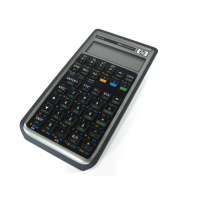The built in solver loop looks like this in principle, assuming n = 0 :
SLVI ; calculate f(a) and f(b) and initialize the registers and flags
LBL 00
RCL 02 ; recall c
XEQUSR ; call the user's subroutine calculating f(c)
; test if the solution has converged
GTO 01 ; converged, so exit the routine
SLVS ; update estimates
x= 0? ; should we continue?
GTO 00 ; loop back again
LBL 01
RCL 02 ; best guess so far
RTN
The actual solver is fairly complex. A combination of quadratic interpolation and a guarded
secant method is used.
Calls a user subroutine (used by SLV, ∫ ). The subroutine is defined by the
argument to the initial command (either numeric of alpha label).

